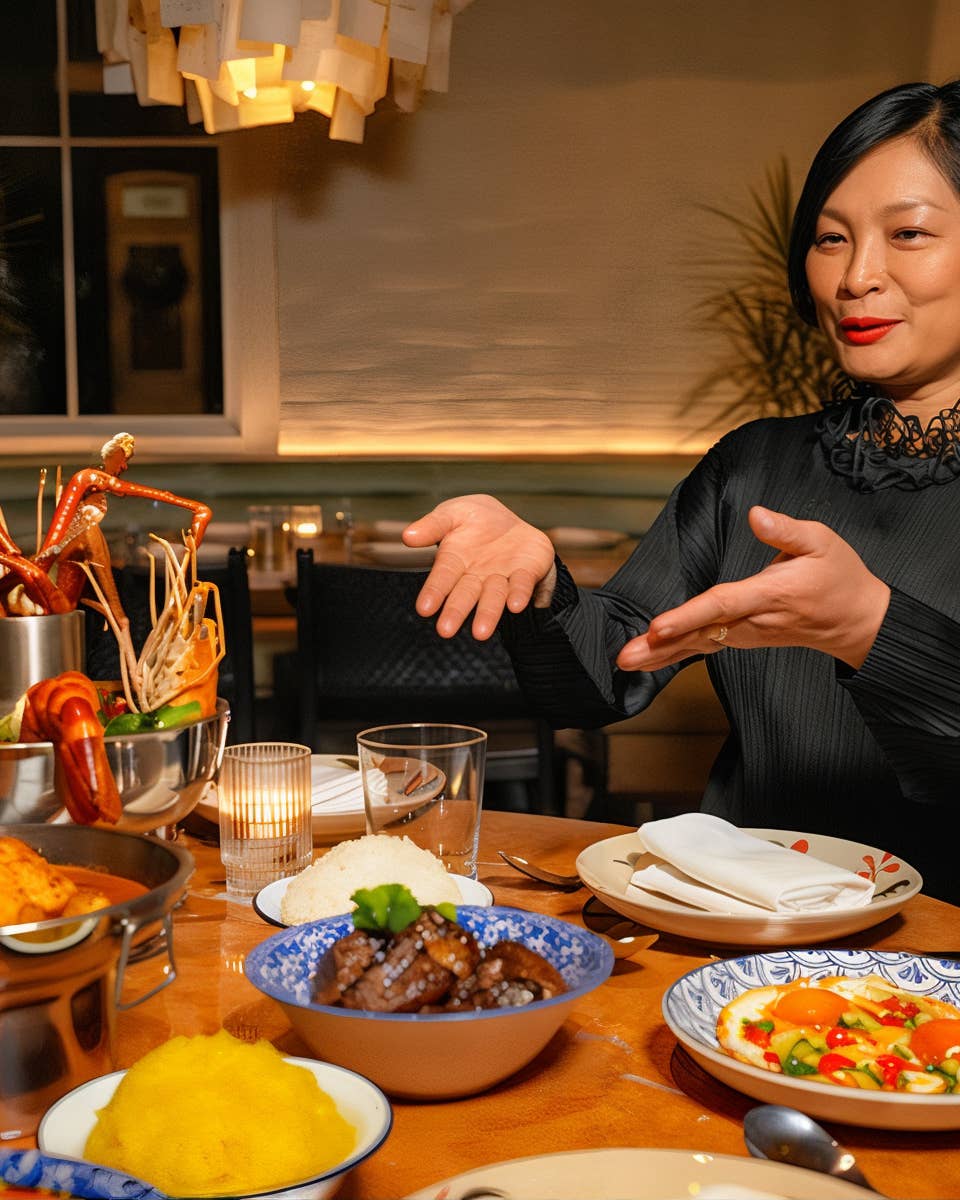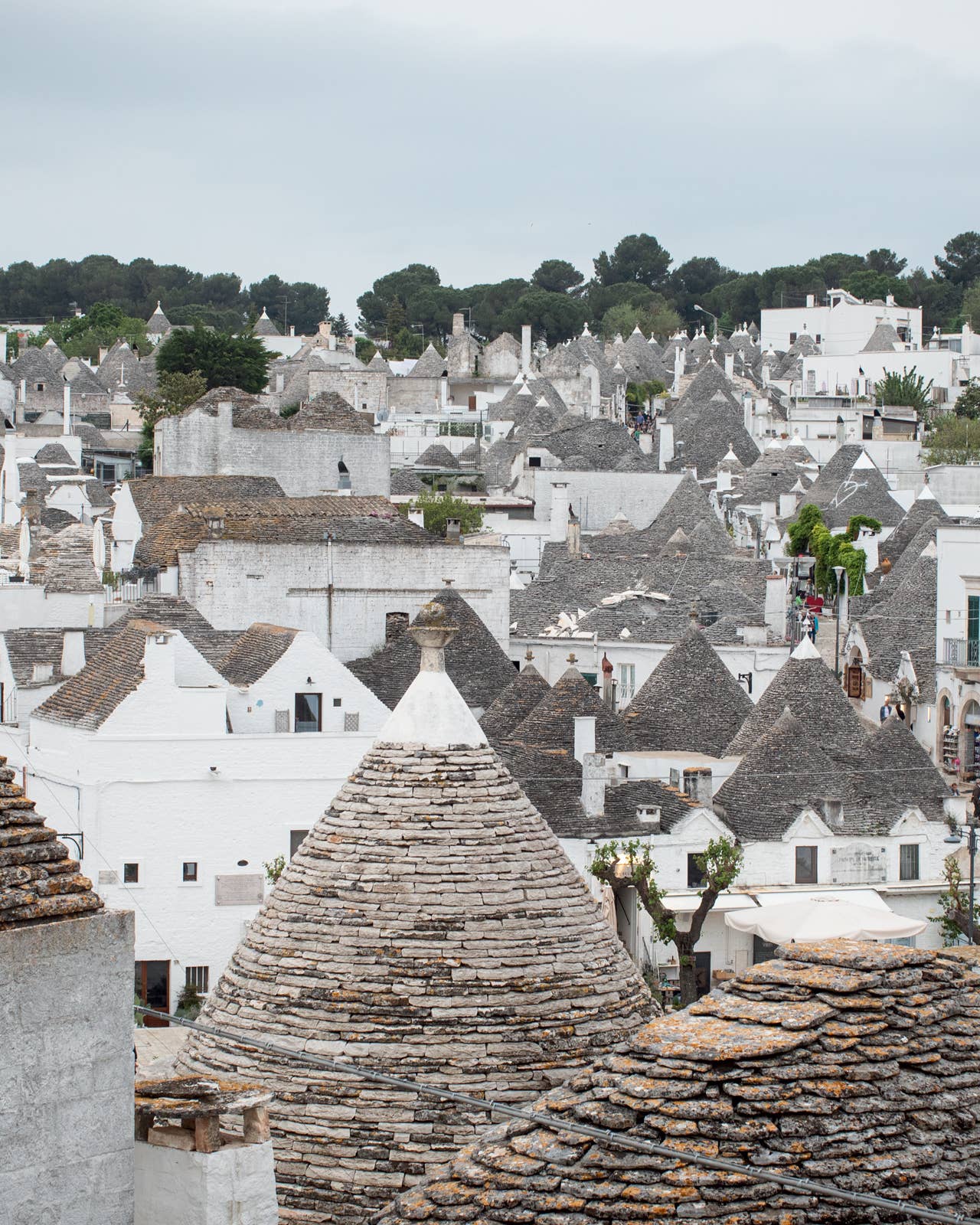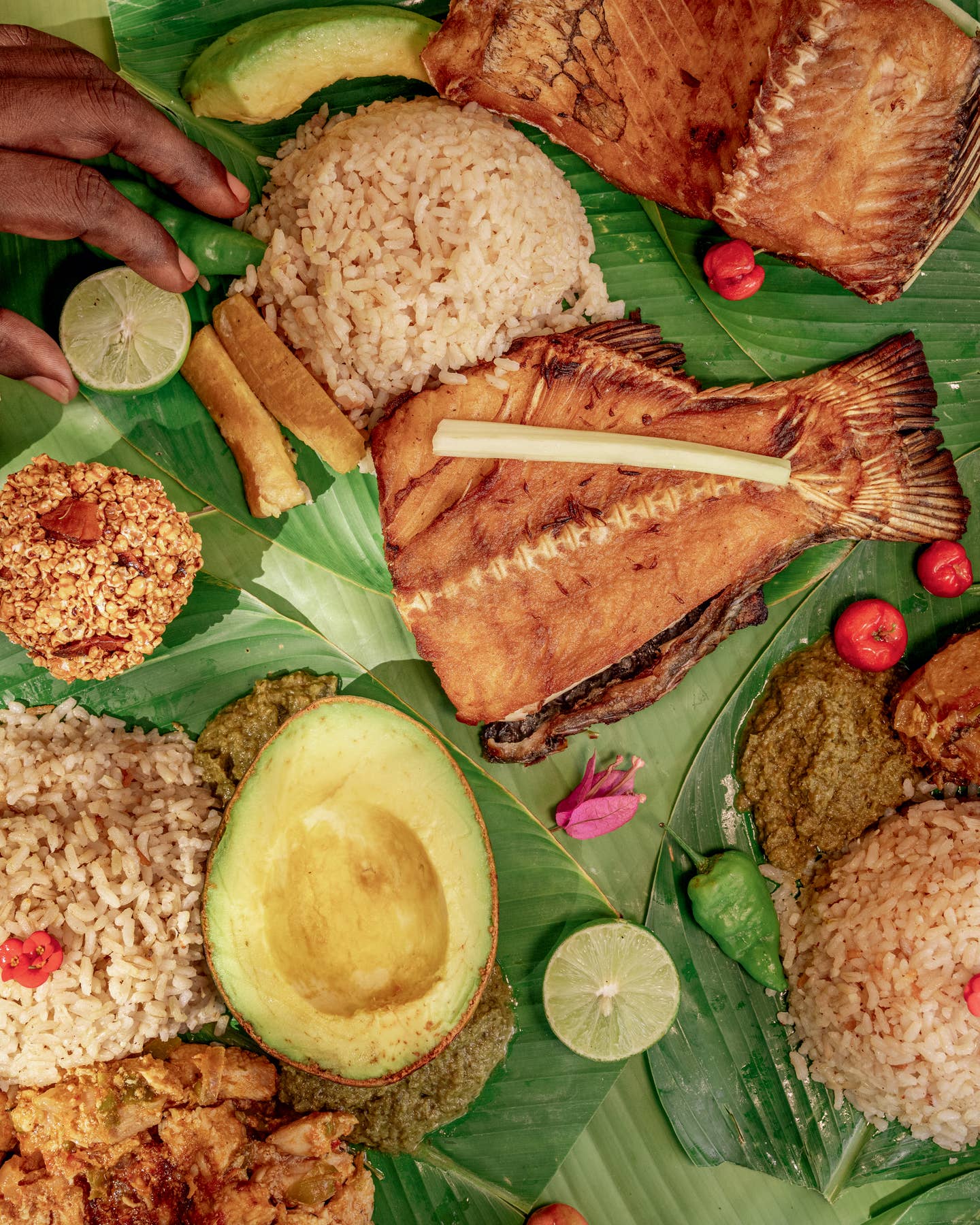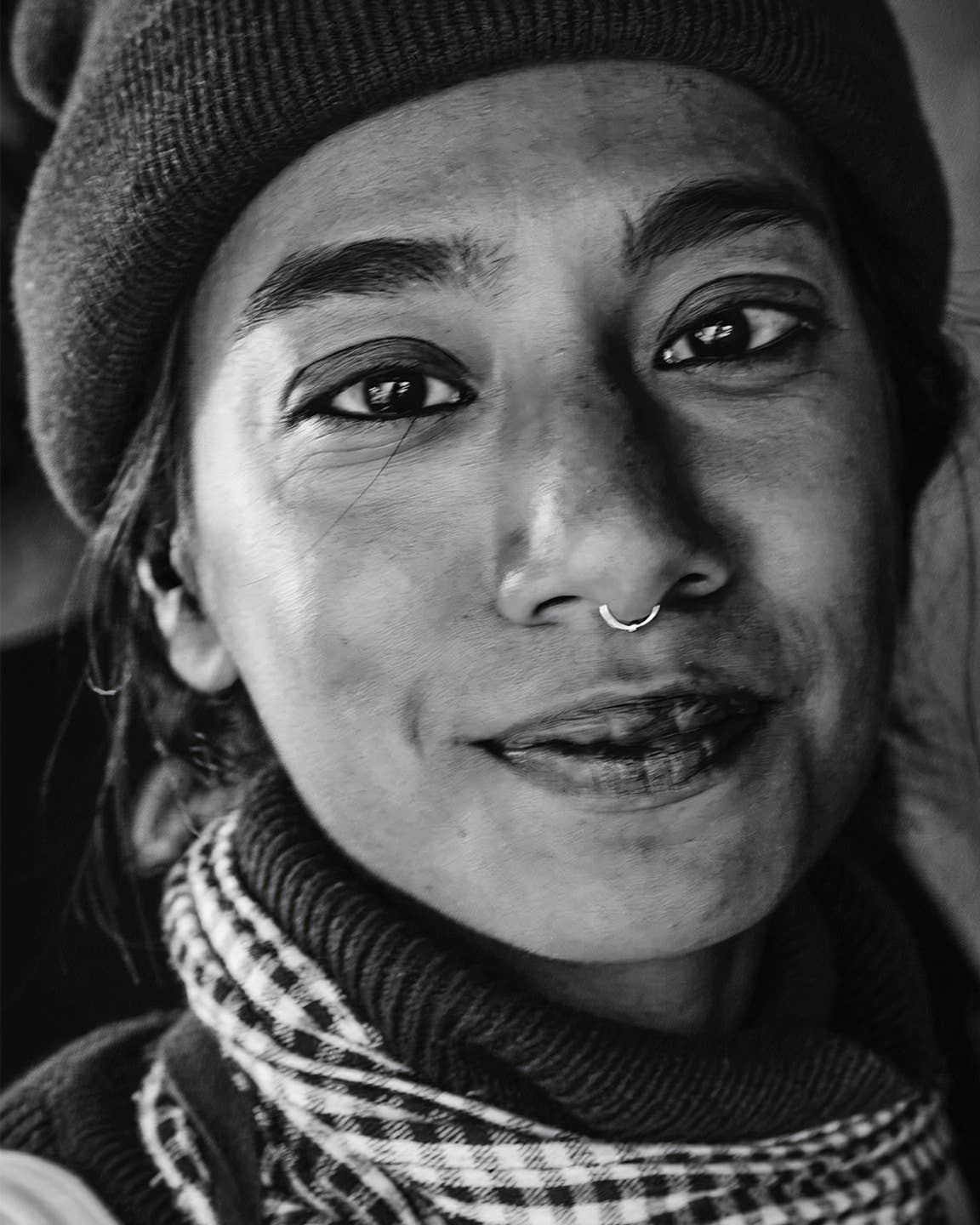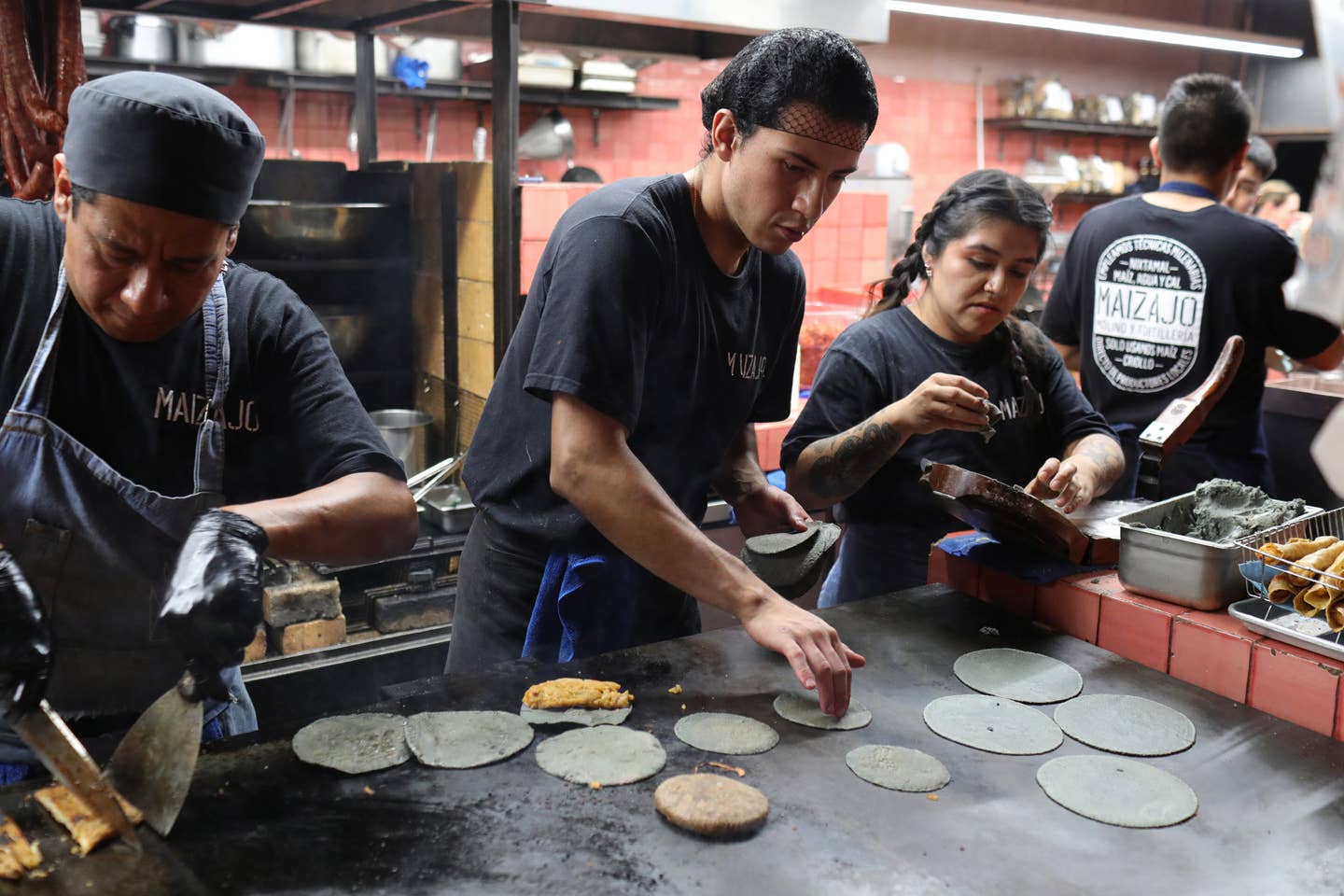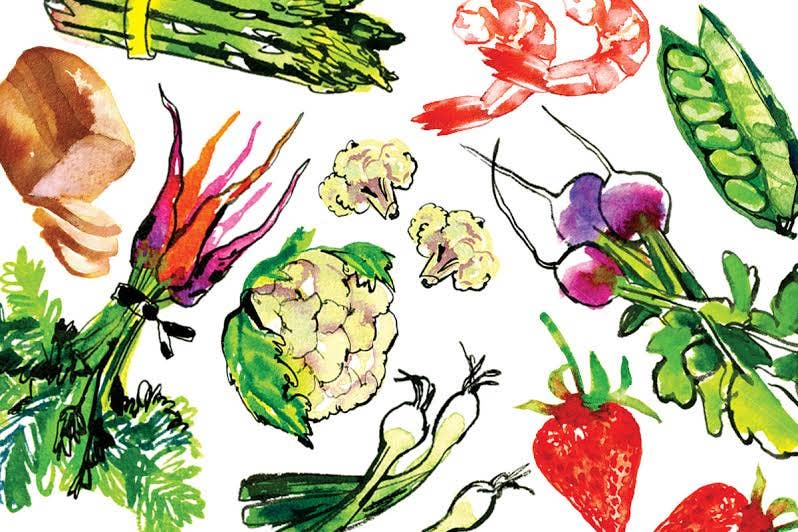
To Market with Papa
I will never forget the first time my father came home from a shopping spree on Arthur Avenue, the great Italian market street in the Bronx, just northeast of Manhattan. It was as if he'd witnessed a miracle. His face was almost beatific as he unpacked the bargain-priced treasures he'd collected: a plump pullet, frilly puntarella (a chicory-like root much prized in central Italy), fresh bread with airholes the size of a child's fist, and bags of golden raisins.
A creature of habit, Dad has shopped the avenue every Friday morning since that first visit, about a decade ago. (Before marketing in the Bronx, for years he'd made forays to Manhattan's Ninth Avenue, but that street has gradually lost its Italian character.) Now, whenever I can, I join him on his trips to Arthur Avenue. I love following him through his routine, not only for what I learn about the food, but for what I learn about being Italian.
My father, Ed Giobbi, an artist and self-trained cook, helped to emancipate Italian food in America from the tired old cliches of chicken parmigiana and spaghetti and meatballs when he published his _Italian Family Cooking _(Random House, 1971). Dad was born in Connecticut, but his people hail from the region of Le Marche, east of Umbria, at the end of the ancient Roman salt road to the Adriatic—and he takes an enormous amount of pride in his Italian heritage.
His father, Achille Giobbi, was born in Offida, Italy, and came to the U.S. in 1905. But it was as if he had never really left the old country. Italian was spoken at home; Achille loved to grow his own vegetables and was skilled at making his own wine. Dad went to Italy after college and studied art there for four and a half years; while perfecting his Italian, he also collected a lot of recipes. By the time he came back to New York, he had romanticized the whole Italian experience, sharing his vision with the rest of the country—and, of course, with me.
My father continued his father's tradition. The home where I grew up, in Katonah, New York—with chickens, rabbits, and a garden full of vegetables in the summer and prosciutti hanging in the barn in the winter—was about as close to an Italian family farm as America can come. Inevitably, it began to seem too much like an Italian family farm to me, but after the obligatory period of rebellion, my interest in the dishes of my youth was reawakened. By the time my own first child was born, in 1991, I had started to re-create the family dinners of my childhood—and visiting Arthur Avenue with my father led me to the rediscovery of my Italian roots.
Arthur Avenue is lined with nondescript tenement apartments, two- and three-family homes, and commercial buildings that reflect classic Italian-American urban ticky-tacky. But though the street may look a bit down-at-the-heels, it's alive with activity: Shops spill out into the street, with foodstuffs, crockery, and knickknacks piled up on makeshift bleachers. A deli owner packs his Cadillac with cheeses as a young man in butcher's whites totes a quarter of a cow's carcass down the avenue on his shoulder. Grandpas sit at outdoor cafes sipping espresso macchiato and reading Il Giornale, while grandmas with complicated braids argue over the dates of baptisms and weddings held a generation ago. Arthur Avenue is really a lot like Italy, but without the ancient architecture and modern motor scooters.
Indeed, the main drag contains what is perhaps the greatest concentration of authentic Italian food merchants east of the Mississippi. More than 200 Italian businesses—most of them food-related—are packed into seven blocks. It's an oasis of hearty European-style living smack in the middle of a borough racked by poverty and crime.
Over the last few years, my father, who loves to speak Italian, has befriended numerous merchants along Arthur Avenue. The first time I tagged along, he took great pleasure in telling each shopkeeper "_Lei ha nata in Firenze _[She was born in Florence]." "Brava!" was the standard response—a congratulation to which I hardly felt entitled. But ethnic pride runs deep in this community of 10,000 Italian-Americans, and I was thrilled to fit in. Now, while Dad talks to his peers, the old geezers who founded the shops, I chat with the next generation, the men and women of my own age who have gone into the family business. (The very fact that so many sons and daughters are staying on in the family store is a sign of Arthur Avenue's continuing vitality.)
Whenever Dad and I shop together, we invariably meet at Cafe al Mercato. This divey little slice of Italy, with its plastic tablecloths and its perfect pizzette topped with broccoli and olives, is located in the 10,000-square-foot indoor market that is the very epicenter of Arthur Avenue. Opened in 1940 by Mayor Fiorello La Guardia—as part of his citywide plan to abolish the informal pushcart market stalls that were cluttering New York City's streets—the market is home to about fifteen stands today. (There were once about a hundred.) Around the perimeter are businesses like Mike's Deli and Mount Carmel Gourmet Food Shop, and in its center is a green maze of vegetable stands, exhibiting not just the usual seasonal fare—at this time of year including potatoes, onions, peppers, tomatoes, zucchini, and corn—but also unanticipated delicacies like speckled cranberry beans and tiny white Italian eggplants.
My father and I plan menus while we shop. Today, for instance, we start by purchasing beautiful wild cauliflower mushrooms, as large and floral as pieces of coral, at Joe Liberatore's 61-year-old stand. As we walk on, my father says, "Do you remember the mushrooms that grew under the maple tree in Katonah? I couldn't identify them. Every fall for years I wondered about those mushrooms. Then I figured, if I'm going to go, it might as well be from a poisonous mushroom." I'm shocked to discover that he's been fooling around with potentially fatal fungi, but he assures me that they were delicious, particularly served in a sauce over medallions of veal. (When we get back to his house later, we cut the cauliflower mushrooms into meaty slices, saute them, and then add them to a tomato sauce for a robust fall pasta dish.) We also buy plum tomatoes and fresh cranberry beans for soup, and bunches of broccoli rabe, packed with blossoms, to saute with garlic and hot pepper.
The Mount Carmel Gourmet Food Shop, its plastic drawers filled with nuts and dried fruit, is another market booth that we never miss. The imported oils and fancy balsamic vinegars are all very alluring, but we are partial to partner Rosa Paciullo's perfectly ground polenta, which we use in one of our favorite concoctions, savory quail with sweet fig sauce served on creamy polenta.
There are a number of sumptuous meat stores on Arthur Avenue, but the one that makes me wish for an extra-deep freezer is Biancardi's. Rabbit, goat, capon, duck, rack of lamb, and veal are available every day. Biancardi's also prepares foods to cook at home—like the veal roast stuffed with prosciutto and herbs, and a dozen different kinds of sausage (among them, an elegant chicken sausage with sweet red peppers). The moment we enter Biancardi's, all the countermen shout "Eduardo!" in unison. Walking through this store with my father is akin to hiring headphones at a museum exhibit: As we pause before each example of animal flesh, Dad explains just what it is and how he'd like to cook that particular beast. Of the rabbit, he says, "I'd roast that one alla genovese, with rosemary, white wine, and dried boletus mushrooms." And of the tripe: "I like to make a nice cool salad with tripe, cauliflower, and garlic." But what really stops him right in his tracks are the quail, daintily butterflied.
Now burdened with many bags, we haul our load to the car—there's a conveniently located municipal parking lot nearby—then head back for bread. The air is warm and dry at Terranova's Bakery, run by two Sicilian brothers, Peter and Gandolfo Terranova. A sawing machine hums, cutting loaves into small slices, ideal for bruschetta. Shoppers are stocking up on the bakery's pane veramente di casa, large airy loaves that are traditional in southern Italy. I ask Peter Terranova what, exactly, that tradition is, and he looks at me as if I were a bug. "Crusty," he says. Terranova's also produces breadsticks and frisellini, a bite-size, crunchy bread made with hot pepper and lard—an ideal complement to cocktails.
My father asks for Vera Terranova, Peter's wife, and she comes up front to chat. She once gave Dad a special recipe for the 18-inch-long tubular pasta she sells, called pasta piena. The pasta is broken, parboiled, then combined with tomato sauce and ricotta and baked. Dad simply loves the dish, and every time we go into the bakery he reminds me of it. "Mrs. Terranova," he tells me seriously, "is a very elegant woman."
The ricotta my father likes to use comes from Calandra's Cheese. Salvatore Calandra has been making ricotta and mozzarella for almost 50 years. (An old-timer stationed near the front door today tells us that he remembers when sheep used to be herded along Arthur Avenue to graze in the nearby New York Botanical Garden—an early form of mowing the lawn). This minimalist shop, with its white Formica counter and simple display of white cheeses, makes ricotta mostly from the whey of cow's milk, in the traditional Sicilian style. The results are looser and lighter than whole-milk ricotta and perfect for a delicate Italian dessert—ricotta fritters garnished with powdered sugar.
A few doors down is Calabria Pork Store. Walking into this world of swine products is one of the greatest sensory experiences that Arthur Avenue has to offer. About four thousand salamis dangle from the rafters, packed so densely that they seem to form a mottled, suspended ceiling. And the smell! The pungent perfume of mold and pork and black peppercorns hangs heavy in the air. Calabria produces its own salsiccia, soppressata, pancetta, and prosciutto (all manufactured calabrese-style, of course). The soppressata, pork packed into a large intestine and flattened with weights, is as delicate and clean-tasting as any cured meat I've had on my cousin's farm in central Italy. It's sold to me by a randy, winking grandpa.
Our next stop is the Teitel Brothers Wholesale and Retail Grocery, owned by a non-Italian Jewish family. An Arthur Avenue institution since 1915, Teitel Brothers sells Italian specialty items, including its own brands of oil (Edda) and canned tomatoes (Francesconi). One doesn't really browse here. If you inspect the big buckets of black and green olives or the jars of artichokes and preserved eggplant, one of the Teitels will usually start yelling, "What are you looking for? You want capers?" On this visit, my father and I buy fresh olives for canning, and pasta by the armload. Years ago, Teitel Brothers used to deliver its goods by horse and wagon; these days, young Edward Teitel regularly updates the store's website.
My father takes our bags to the car for a second unloading while I hit one of my favorite spots—Marie's Roasted Coffee Beans & Gifts, which sells imported Italian pottery. I can't resist the dense, joyfully colored dishes, particularly the wide pasta and service bowls that sit nestled in cardboard wrapping on the sidewalk. Inside, ornate, gaudy formal coffee sets, replete with gilt and scenes of romping Tuscan shepherds and shepherdesses, adorn the shelves, and beneath the glass countertop one can find tapes by Italian crooners like Federico Salvatore and Nino Taranto.
When my father returns, we head over to Randazzo's Seafood Market, which has been selling its pristinely fresh fish here since 1918. Dad fingers a plump whiting, lifting the fish gently and sniffing it. "Very fresh," he informs me. "You can tell because it smells like cucumber." At Randazzo's, one can find the Adriatic and Mediterranean specialties that make the ultimate fritto misto di mare—baby octopus, fresh anchovies, and triglie (red mullet). Other briny favorites are seppie (cuttlefish) with their ink sacs intact, and aguglie (garfish), which resemble eels but are a shiny silver with a long pointed nose. "I used to catch these with my hands when I visited my grandmother in San Benedetto del Tronto!" I excitedly tell one of the fishmongers—I hadn't seen this fish in 20 years—and he smiles the polite but weary smile of someone used to surprised tourists. As many as 100 different kinds of fish are sold at Randazzo's, including live eels, which are stunned, then cleaned before they are dead.
When our shopping is completed, my father and I like to stop in at Cafe Margherita for focaccia with eggplant and peppers and a glass of wine. This place, which looks like some kind of tiki lounge, embodies the campy side of New York-style Italian-American taste. It cracks my father up. "When I first saw this place I didn't believe it was for real," he says, "but the food is very honest and the decor, well, it's Italian." It's also a wonderful way to end the morning.
When I cook with my father, I'm the sous-chef and the apprentice, and I learn something new every time. Once, we brought home fresh sardines that we fried and packed in a glass dish with sauteed onions, wine vinegar, and oil. This time, we stuff small, round hot peppers with bread crumbs, grated parmigiano-reggiano, garlic, and oregano, and pack them into Mason jars full of olive oil; they'll make a great bar snack in a few months' time.
But whatever the dinner or the project, a trip with my father to Arthur Avenue is ultimately about connecting to my family's roots. The nonno who remembers the sheep in the botanical garden, elegant Mrs. Terranova and her super tubes of pasta, the butchers' banter as they flatten scaloppine, the flirty old soppressata salesman—for me it's more than just a shopping expedition, it's a part of my heritage. And it's just a short ride from home.
Keep Reading
Continue to Next Story




